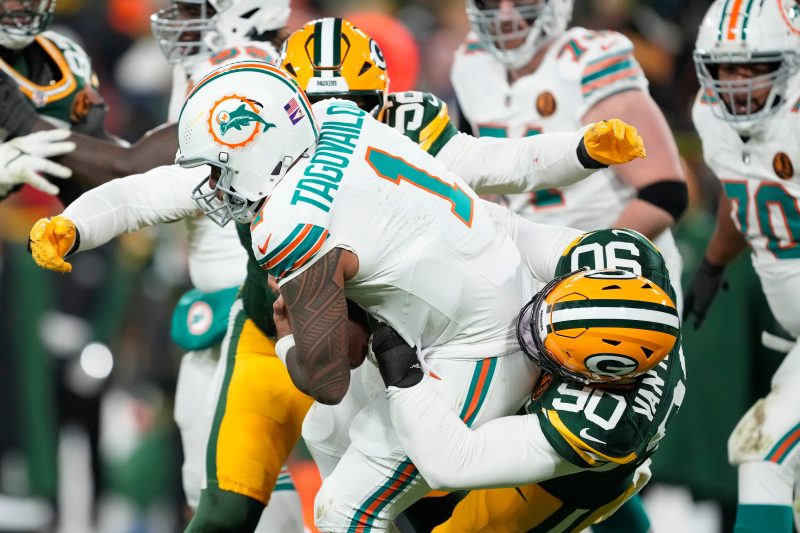Texas A&M renews Texas rivalry with ‘little brother’ ready for fight

- Pride was on the line when Texas and Texas A&M last met 13 years ago. That’s still on the line – and so much more.
- Texas considers Texas A&M its ‘little brother,’ but Aggies got stronger inside the SEC, before Longhorns joined them.
- Texas won the race to CFP qualification first. Can it also reach SEC championship game first?
They arrived in the same place but took different paths to get here.
Texas A&M left behind its bitter rival, Texas, more than a dozen years ago and seized control of its future.
Exhausted of being in a conference where the Longhorns ruled the board room and controlled the till, the Aggies struck out for the SEC, which offered more visibility, premier opportunities for athletes and a sweet payday.
In doing so, A&M thought they might never again share a conference with Texas.
They thought wrong, but they did get there first.
What’s that worth?
We’ll learn a little something about that Saturday, when No. 19 Texas A&M hosts No. 3 Texas in the first meeting of these bitter rivals in 13 years.
“We’ve had a dozen years to establish ourselves independently of Texas, and that’s been a good thing,” said former Texas A&M president R. Bowen Loftin, the man who steered the school out of the Big 12 and into the SEC.
These programs find themselves on better footing than they were when they last met, after Big 12 unrest – and Texas’ role in it – spurred the Aggies to pursue another conference.
Pride was on the line in 2011.
That’s still on the line – but much more, too. The victor Saturday will advance to play Georgia in the SEC championship game.
“We’ve always been treated by (Texas) as a little brother, a smaller version of them, basically,” Loftin, a Texas A&M alumnus, told USA TODAY Sports, “a less worthy version of them, and we had the chance to build up our base support, our reputation, and our image, independently of them for a dozen years.
“I think we’re ready for it.”
Texas A&M’s chance to show Texas how strong ‘little brother’ became
The Aggies, for the better part of a dozen years, enjoyed a laugh at Texas’ expense.
Although neither program spent much time among the elite during their years apart, Texas A&M inched ahead of Texas and won more games during that period, while competing in a tougher conference.
The footing shifted in 2021. The Longhorns finally got a coaching hire right, tapping Steve Sarkisian. That summer, SEC commissioner Greg Sankey shocked the Aggies with plans to add Texas and Oklahoma. Texas reached the College Football Playoff first, qualifying last season.
GIVING THANKS: It’s Rivalry Week: Embrace the college football crazy
WEEKEND FORECAST: Experts picks for every Top 25 game in Week 13
Saturday’s result will decide which program makes it to the SEC championship game first. Texas A&M came up just short in 2012 and again in 2020.
How haunting it would be for the Aggies to watch the Longhorns cruise to Atlanta at their expense and prove the SEC simple enough to summit, after all.
Alternatively, how humbling it would be for Texas to lose to the Aggies and swallow the harsh reality that “little brother” bulked up during their time apart.
Combine the rivalry’s hiatus with the SEC championship stakes and College Football Playoff plot, and this will be a game unlike any this past decade within a state where being a fan of one of these behemoths means despising the other.
‘To finally be playing and to be playing for what we’re playing for, it’ll be pretty electric on Saturday,” Texas A&M coach Mike Elko said.
Will it ever. A stadium that shakes for a normal conference game will positively tremble when the music plays while the home team emerge from the tunnel.
Earlier this year, a crowd of 110,905 piled into Kyle Field for a George Strait concert.
If anyone trumps Strait in Texas, it’s the Aggies and Longhorns. Even the cheap seats for are selling for upwards of $600 on ticket resale sites.
Among those attending will be Loftin, who didn’t expect to see Texas again as a conference foe after shepherding Texas A&M into the SEC.
“I’ll be there,” Loftin said. “I wouldn’t miss it for the world.”
How Texas ‘arrogance’ sparked Texas A&M’s decision to join SEC
Loftin remembers a meeting of Big 12 university leaders in 2009 and seeing who was in charge.
Then-Texas president Bill Powers chaired the Big 12’s board of directors.
“It was clear who was in command,” Loftin said.
Texas ran the show and controlled the purse.
Unlike the SEC’s equal media rights revenue distribution, the Big 12’s uneven revenue distribution then favored the biggest brands, like Texas and Oklahoma, that received top television exposure.
“The inequity in the conference was palpable,” Loftin said.
So was the disharmony.
By 2010, the realignment carousel kicked into gear.
“Their arrogance and condescension was clear to me,” Loftin said of Texas, “and I made it clear to the board of regents at Texas A&M, and they supported me, ordered me, to go out and find alternatives to our continued membership in the Big 12.”
Beyond the Big 12’s borders, Pac-10 commissioner Larry Scott harbored visions of building a Pac-16 super-conference by raiding the Big 12.
Scott’s plan would have preserved Texas and Texas A&M in a league together. Scott’s plot failed. He snagged only Colorado from the Big 12 and Utah from the Mountain West. Nebraska exited for the Big Ten.
Texas stayed put, in part because it enjoyed a pathway within the Big 12 to launch its own sports network, the Longhorn Network, in partnership with ESPN.
Loftin credits Texas – and the Longhorn Network – for unifying key brass and Aggies fans behind the idea of Texas A&M leaving the Big 12, separating from Texas and joining the SEC.
“Texas made this possible,” Loftin said. “The Longhorn Network was the primary reason that I was permitted to go forward in 2011 and get us into the SEC. Without that happening, I’m not sure we have the courage or the consensus to be able to do that.”
New generation will form memories of Texas-Texas A&M rivalry
These universities transitioned to new leaders since their breakup.
Loftin stepped down as Texas A&M’s president and became Missouri’s chancellor in 2014. He’s retired now, while remaining an avid Aggies supporter. Powers resigned at Texas in 2015. Athletics directors and coaches changed, too.
The rivalry got relegated to fan message boards, until the SEC restored one of college football’s best games to the Thanksgiving week calendar.
“I think it’s so cool that we’re playing this game again,” Sarkisian said.
Elko, formerly the Aggies’ defensive coordinator, says “it always felt weird not playing” Texas.
“When you have two programs as large as these two programs are as close to each other as they are, it doesn’t make a ton of sense for them not to play,” Elko said.
So many years passed since the last Texas-Texas A&M matchup, current players hardly know the hero of the 2011 Lone Star Showdown.
Texas’ Justin Tucker drilled a 40-yard field goal to lift the Longhorns to a 27-25 victory in that final meeting as Big 12 rivals.
With one field goal, Tucker entered Texas lore – just don’t expect current Longhorns remember him.
“He’s a kicker, right?” Texas wide receiver Matthew Golden, a Houston native, told reporters this week, unsure whether his answer was correct.
Yes, it’s past time to form new memories of an old rivalry, within the nation’s fiercest conference, with stakes as high as ever.
“The rivalry,” Loftin said, “is back.”
Blake Toppmeyer is the USA TODAY Network’s national college football columnist. Email him at BToppmeyer@gannett.com and follow him on Twitter @btoppmeyer. Subscribe to read all of his columns.







